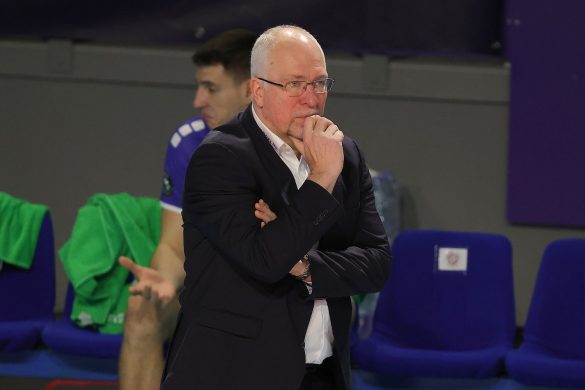
A few days ago I gratefully received in my Instagram feed one of those extremely helpful technical tips that proliferate on the platform. This one was on the topic of setting, with clips of two desirable actions. I won’t encourage you to provide clicks by linking it here (I also can’t find it 😜) but I can explain it. The first clip had the setter facing position 4 to set to position 4. In the second clip, the setter ‘faced’ position 2 to set to position 2. The first head scratcher is that we all (presumably?) learnt that the setter should ‘square’ to a consistent position regardless of the direction of the set. But then one has a quick glance at the caption. ‘Efficiency of movement is the goal’. Of course, now it makes perfect sense.
If your goal is efficiency of movement, then this technique is perfect. If however you have a different goal, for example create to uncertainty in the mind of the opposing middle blocker, this particular technique is a disaster, telegraphing as it does the setter’s intention long before ball contact. Defining the goal leads one in the direction of the required method and the clearer and more precise the goal, the more ‘obvious’ the method.
It turns out that this is a key point in technical and tactical understanding and development. What exactly is the goal? If your reception goal is ‘keep the ball alive’, the technique is different from ‘pass to a specific point’. If the defensive goal is ‘touch the most number of balls’, the position 6 defender stands in a completely different place than if the goal is ‘create excellent transition attacking opportunities’. If the goal is ‘to spike’, then the entire process of preparation, approach and attack is entirely different than if the goal is ‘to attack’. Here are examples of attacking situations in which ‘spiking’ is not the primary goal.
The lesson is that if a coach is searching for the appropriate technique or tactic (or training method) to fit their situation, then spend time thinking about the goal. Really thinking about, in detail. Once the goal has been precisely defined it is remarkable how often there turns out to be be a single solution.
About Mark Lebedew:

Mark Lebedew authors the At Home on the Court Blog. He coaches professionally in Poland, from january 2021 with eWinner Gwardia Wrocław, in season 2019/20 with Aluron Virtu CMC Warta Zawiercie and in the period 2015-2018 with KS Jastrzębski Węgiel. That follows five seasons Germany where his Berlin Recycling Volleys won three straight league titles and a CEV Champions League bronze medal. He has prior professional experience in Belgium and Italy. Mark was also Head Coach for the Australian Men’s National Team. From 2021/2022 until the end of the 2023/2024 season he was at the helm of VfB Friedrichshafen, while in 2022 he led the Slovenian national team during the Volleyball Nations League. In the 2024/2025 season, Mark Lebedew takes charge of the Netherlands’ team, Nova Tech Lycurgus.
Mark partnered with his brother and father to translate and publish “My Profession: The Game“, the last book by legendary Russian coach, Vyacheslav Platonov.
With John Forman, he is behind the Volleyball Coaching Wizards project (link http://volleyballcoachingwizards.com/) which identifies great coaches from all levels, making their experience, insights, and expertise available to people all over the world. The project has produced multiple books, a in e-book format available here ( link to http://bit.ly/34yakou ) or at Amazon here (link https://amzn.to/2JRqTE6).
In 2021, he launched project Webinars and Presentations on Demand. If you are interested for coaching presentations and webinars available on demand, click here.
- The Moment the Spotlight Fades: Ivan Miljković’s Heartfelt Letter Every Athlete Should Read
- Reports in Türkiye Link Antropova to Eczacibasi for 2026/27 Season
- BRA M: Sada Cruzeiro Hands Praia Clube First Loss, Takes Superliga Lead
- FRA M: Montpellier Moves Top, Tourcoing Stuns Tours
- TUR M: Kooy Joins Ziraat Bankkart